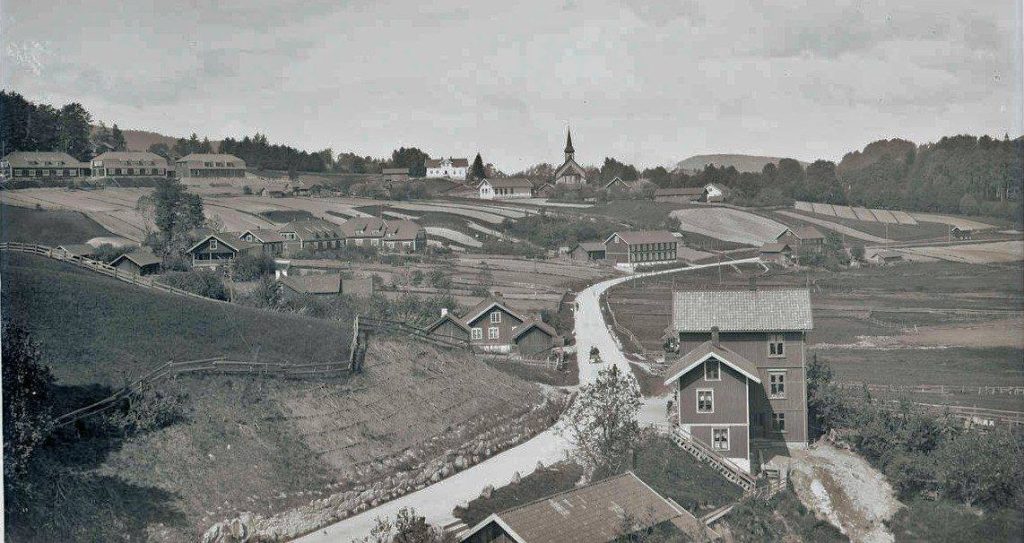by Peder Gammeltoft
One of the core questions in place-name research is: What is the motivation for a name? On the surface, this looks pretty straightforward. All place-names are formed from the existing, spoken language at the time of formation. So, if we know what words existed at any given time, their declension and meaning, then it is a matter of correctly interpreting the individual components of a place-name, and then we have the meaning of the name, right?
Unfortunately, things are not as simple as that. In an ideal world, an interpretation gives a formal origin: name X consists of element 1 in the genitive singular + element 2 in the plural. This allows us to show what the constituents of a place-name is and what the meaning is. However, the factual assessment is often based on parallel examples, even in cases where we are temporally almost in touch with the actual naming moment. And although we can probably guess what must have been the naming motive, we cannot be sure.
For instance, take a place-name like Gåserød (1575 Gaaßerudt) in Andebu, Vestfold, Norway. Formally, the first element is either Old Norwegian gási, m. ‘gander, male goose’ or the derived male byname Gási, m. The last element is more straight forward, Old Norwegian ruð, n. ‘a clearing’. But what is the naming motive behind Gåserød? Was the settlement cleared by a man named Gási, had geese been spotted at the locality, or were geese being reared at the settlement? This we can never know, as we do not have a record of why people started calling this place for Gåserød.
An illusive Find or a name transfer?
In a few cases, however, we can prove a naming motive through historical records. Near the famed Ulefos Ironworks in Holla in Telemark, there used to be a smallholding or homestead, in the sources variously spelled “Findsruud” or “Finsrud” or “Finsrød”. The smallholding is not of great age, being recorded no earlier than the beginning of the 18th century. It was originally set up on cleared land outside of the cadastral system, as was the norm earlier. Finsrud holds some fame locally, as it used to be the permanent residence of the hammer masters at the ironworks, which were central persons in the community.
Throughout the next two centuries we find the name with theses spellings. However, in local historical literature from the 20th century we find “Finsrod” or “Finnsrote” as variant spellings of the place name. In 1732 Findsruud became the permanent residence for a hammer master Niels Olsen Finsrod at Holden’s Ironworks (later Ulefos). He was a member of the Finsrod family who immigrated from Sweden in the 17th century, possibly via Finnskogen. For this reason, local historical literature has assumed that “Findsrud” or “Finsrod” is the same name, but with alternative spellings. If this is the case, then Finsrud would be an adapted name transfer either from an original settlement of Finsrod, or more probably from the family name Finsrod.
It is not unknown that a family name can be transferred to a settlement, and “Finsrod” may also lie behind the name form “Finsrud” or “Finsrød”, if the surname origin has been either misunderstood or rather a reinterpreted analogous to the very frequently occurring place-names –rud/-rød in Eastern Norway. However, since the family name would have been alive or remembered when the name became established locally, such a change should not have been a likely occurrence. Is there another explanation?
The smallholding was one of the pieces of property in the parish from which the local priest had income (prestebord) for his sustenance. Therefore, we have good early record of the Finsrud settlement. When the priest leased the smallholding to Niels Olsen Finsrod in 1732 (the rectory owned the land), the lease document tells that the name of the previous lease holder was a Find Findsen. We know from church records that Find Findsen lived from ca. 1654 to August 4th, 1720, but more importantly, the document also states that Find Findsen owned the right to clear the site, but that the clearing right had been sold back to the rectory by the widow. This clearing right was incidentally purchased by Niels Olsen Finsrod in 1738.

The naming motive established
The lease agreement determines that Find Findsen had leased the smallholding Findsruud and had had the clearing right there. This means that the place-name must have been named after him, or possibly rather his father, who the patronym shows was also called Find. Since the ironworks was founded in the 1650s, it is quite possible that the settlement had been in the possession of the same family since establishment.
Local historical research has not been able to establish any indication that neither Find Findsen nor his father belonged to the Finsrod family. The first Finsrod that can be definitely linked to Finsrud is aforementioned Niels Olsen Finsrod in 1732. Finsrud was named after the original clearer of the smallholding.
This case study shows that the naming motive is often quite illusive, but it may be found in certain instances – especially if attention is paid to historical research, either locally or in central archives.
Note: This article has been conceived with inspiration from an e-mail correspondence with archivist Nils Stoa in relation to an article he publishes later this year on the same subject.
Literature
- Stoa, Nils. 2023 (forthcoming). ‘Plassen Finsrud på Ulefoss’. In Gunnar Sanden (ed.), Holla Minner. Holla.
- Strøm, Gard. 2018-2023. ‘Findsrud under prestegården’. In: Gamle Holla. Interaktiv bygdebok for Holla.
